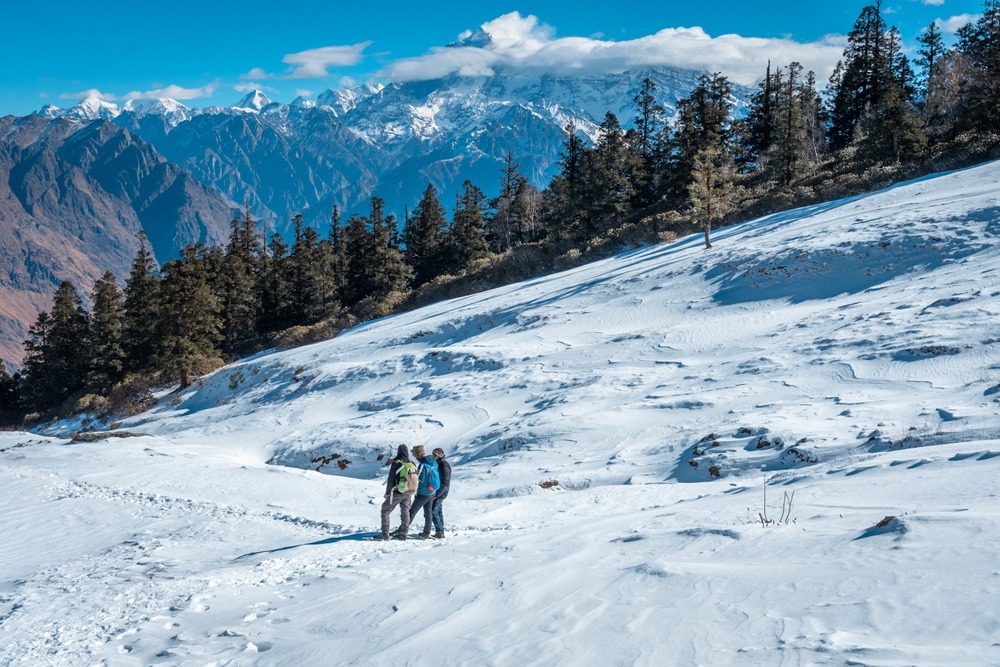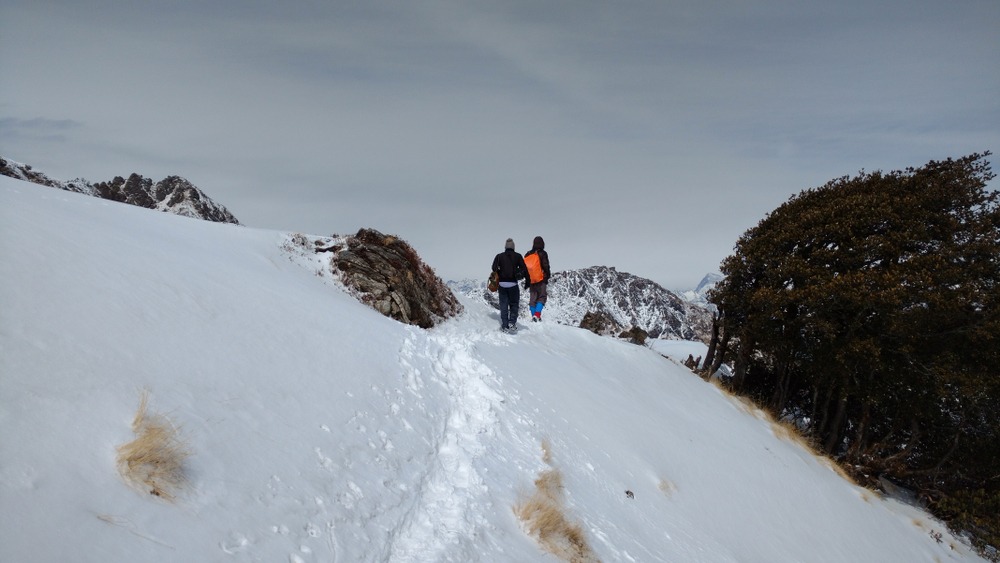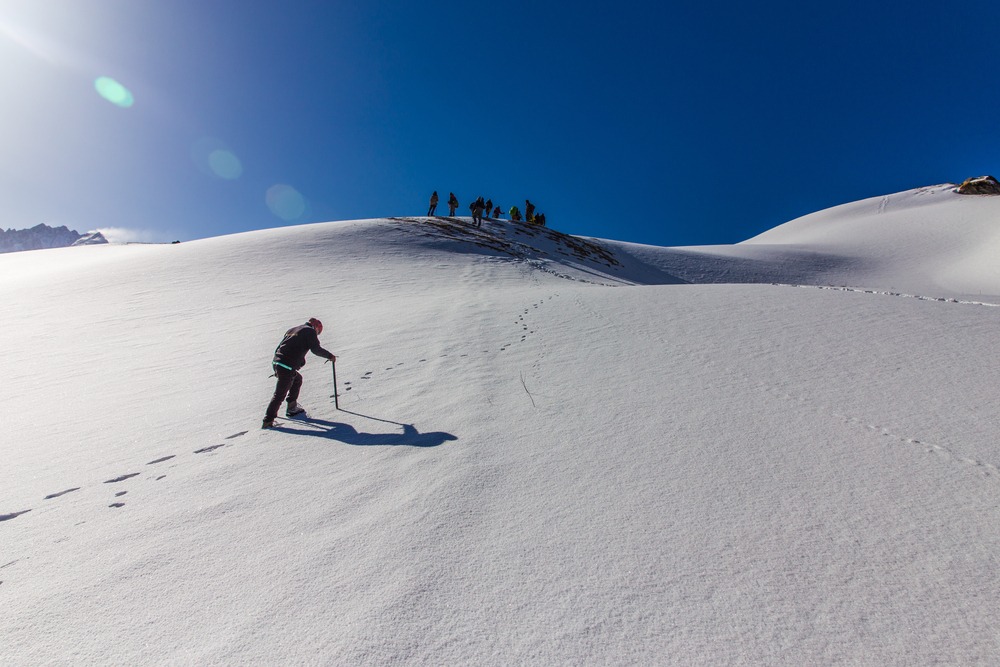Are you ready to embark on a journey of a lifetime? The Kuari Pass Trek awaits, promising breathtaking vistas, thrilling adventures, and unforgettable memories. But before I lace up my boots and hit the trail, let’s delve into the best time to experience the magic of this Himalayan gem.
1. Understanding the Kuari Pass Trek

Before I dive into the best time for my adventure, let’s understand what makes the Kuari Pass Trek so special. Situated in the Garhwal Himalayas of Uttarakhand, India, this trek offers a mesmerizing blend of alpine meadows, dense forests, charming villages, and majestic peaks.
The Kuari Pass Trek, also known as the Curzon Trail, takes its name from the historic British viceroy, Lord Curzon, who explored the region in the early 20th century. It offers trekkers an opportunity to follow in the footsteps of explorers and adventurers, immersing themselves in the natural beauty and rich cultural heritage of the Himalayas.
The trek typically spans over 4-6 days, covering a distance of approximately 33-40 kilometers, depending on the route chosen. Along the way, trekkers are treated to breathtaking views of snow-capped peaks, including Nanda Devi, the second-highest mountain in India.
2. Weather Conditions
Weather plays a crucial role in determining the success and enjoyment of my trek. From clear skies to heavy snowfall, the Kuari Pass region experiences a wide range of weather conditions throughout the year.
During the spring and autumn months, the weather is generally pleasant, with mild temperatures and clear skies. This makes it an ideal time for trekking, as I can enjoy the stunning views without having to contend with extreme weather conditions.
In contrast, the summer months can bring warmer temperatures and occasional rain showers, particularly in the lower elevations. While this may make trekking more challenging, it also means that the valleys are lush and green, creating a picturesque backdrop for my adventure.
Winter in the Kuari Pass region is harsh, with freezing temperatures and heavy snowfall. While this may deter some trekkers, it also transforms the landscape into a winter wonderland, offering a unique and unforgettable trekking experience for those willing to brave the cold.
3. Peak Season vs. Off-Season

Choosing between peak season and off-season can significantly impact my trekking experience. While peak season offers vibrant landscapes and bustling trails, the off-season provides solitude and a deeper connection with nature.
Peak season for the Kuari Pass Trek typically coincides with the spring and autumn months, from March to May and September to November, respectively. During this time, the weather is favorable, and the trails are bustling with fellow trekkers and adventurers.
In contrast, the off-season, which includes the summer and winter months, offers a quieter and more peaceful trekking experience. While the weather may be more challenging, with warmer temperatures in summer and freezing temperatures in winter, it also means that I can enjoy the tranquility of the mountains without the crowds.
4. Spring: A Symphony of Blooms
Spring breathes new life into the mountains, painting them with a myriad of colors. March to May is the perfect time to witness blooming rhododendrons, making my trek a visual feast.
During the spring months, the valleys are carpeted with vibrant wildflowers, creating a stunning contrast against the snow-capped peaks. The weather is mild, with clear skies and comfortable temperatures, making it an ideal time for trekking.
In addition to the stunning scenery, spring also offers the opportunity to witness local festivals and cultural events, providing a glimpse into the rich traditions of the Himalayan communities.
5. Summer: Trekking Amidst Lush Greenery

As summer sets in, the valleys come alive with lush greenery. June to August offers pleasant weather and clear views, ideal for first-time trekkers and nature enthusiasts.
While the summer months may bring warmer temperatures and occasional rain showers, they also offer the chance to experience the beauty of the Himalayan forests in full bloom. The trails are lined with verdant foliage, creating a cool and refreshing environment for trekking.
Summer is also the perfect time to spot a variety of wildlife, including deer, monkeys, and a wide range of bird species. With fewer trekkers on the trails, I can enjoy a peaceful and immersive experience in nature.
6. Monsoon: Challenges and Rewards
Monsoon brings its own set of challenges, with rain showers and slippery trails. However, brave souls can embark on the trek from July to September, reveling in the mystical beauty of mist-covered mountains.
While trekking during the monsoon season may require extra precautions and waterproof gear, it also offers a unique and exhilarating experience. The mountains are shrouded in mist, creating an ethereal and otherworldly atmosphere that is truly unforgettable.
In addition to the dramatic scenery, the monsoon season also brings lush greenery and cascading waterfalls, adding to the allure of the trek. Despite the challenges, trekking during the monsoon can be a rewarding and transformative experience for those willing to embrace the elements.
7. Autumn: A Canvas of Colors
Autumn casts a magical spell on the landscape, transforming it into a canvas of vibrant hues. September to November is considered the best time for trekking, with clear skies, crisp air, and stunning panoramic views.
During the autumn months, the mountains are ablaze with color, as the leaves of the trees change from green to gold, red, and orange. The weather is mild and stable, making it an ideal time for long treks and high-altitude adventures.
In addition to the stunning scenery, autumn also offers the chance to witness local festivals and cultural events, providing a deeper insight into the traditions and customs of the Himalayan communities.
8. Winter: A Frosty Wonderland
Winter blankets the region in a pristine layer of snow, offering a unique trekking experience. December to February is perfect for seasoned trekkers like me, seeking solitude and adrenaline-pumping adventures.
While winter trekking may require extra preparation and warm clothing, it also offers the chance to experience the mountains in their most pristine and untouched state. The trails are quiet and peaceful, allowing me to enjoy the solitude and serenity of the snowy landscape.
Winter also offers the opportunity for snow sports such as skiing and snowshoeing, adding an extra element of adventure to my trek. With the right gear and preparation, winter trekking can be a truly exhilarating and unforgettable experience.
9. Best Months for the Kuari Pass Trek
While each season has its charm, the best months for the Kuari Pass Trek are April, May, September, and October. During these months, I can enjoy favorable weather conditions, picturesque landscapes, and relatively fewer crowds. If you’re planning to embark on the Kuari Pass Trek and are looking for a reputable company to guide you through this unforgettable adventure, look no further than The Searching Souls. With years of experience in organizing treks and expeditions in the Himalayas, The Searching Souls is your trusted partner for a safe, memorable, and rewarding trekking experience.
April and May offer the chance to witness the vibrant blooms of spring, while September and October provide clear skies and stunning autumn colors. Whether I prefer the lush greenery of summer or the snowy landscapes of winter, there’s a season for every adventurer on the Kuari Pass Trek.
10. Conclusion
In conclusion, the best time to embark on the Kuari Pass Trek depends on my preferences and trekking experience. Whether I prefer the vibrant blooms of spring or the snowy wonderland of winter, there’s a season for every adventurer.
Frequently Asked Questions (FAQs)
1. When is the Kuari Pass Trek closed?
The Kuari Pass Trek is typically closed during the winter months from December to February due to heavy snowfall and harsh weather conditions.
2. Is the Kuari Pass Trek appropriate for first-timers?
Yes, the Kuari Pass Trek is suitable for beginners, especially during the summer and autumn months when the weather is favorable and the trails are well-defined.
3. Is obtaining a permit necessary for hiking Kuari Pass trek?
Yes, permits are required for the Kuari Pass Trek, which can be obtained from the forest department or authorized trekking agencies.
4. For the Kuari Pass Trek, what should I bring?
Essential items to pack for the Kuari Pass Trek include trekking gear, warm clothing, sturdy boots, a first-aid kit, sunscreen, and a water bottle.
5. Are there any altitude-related risks during the Kuari Pass Trek?
Altitude-related risks such as altitude sickness can occur during the Kuari Pass Trek, especially at higher elevations. It’s essential to acclimatize properly and listen to my body’s signals.
Look For More Trek To Read – Valley of Flowers Trek: Witness the Majesty of Alpine Flora

